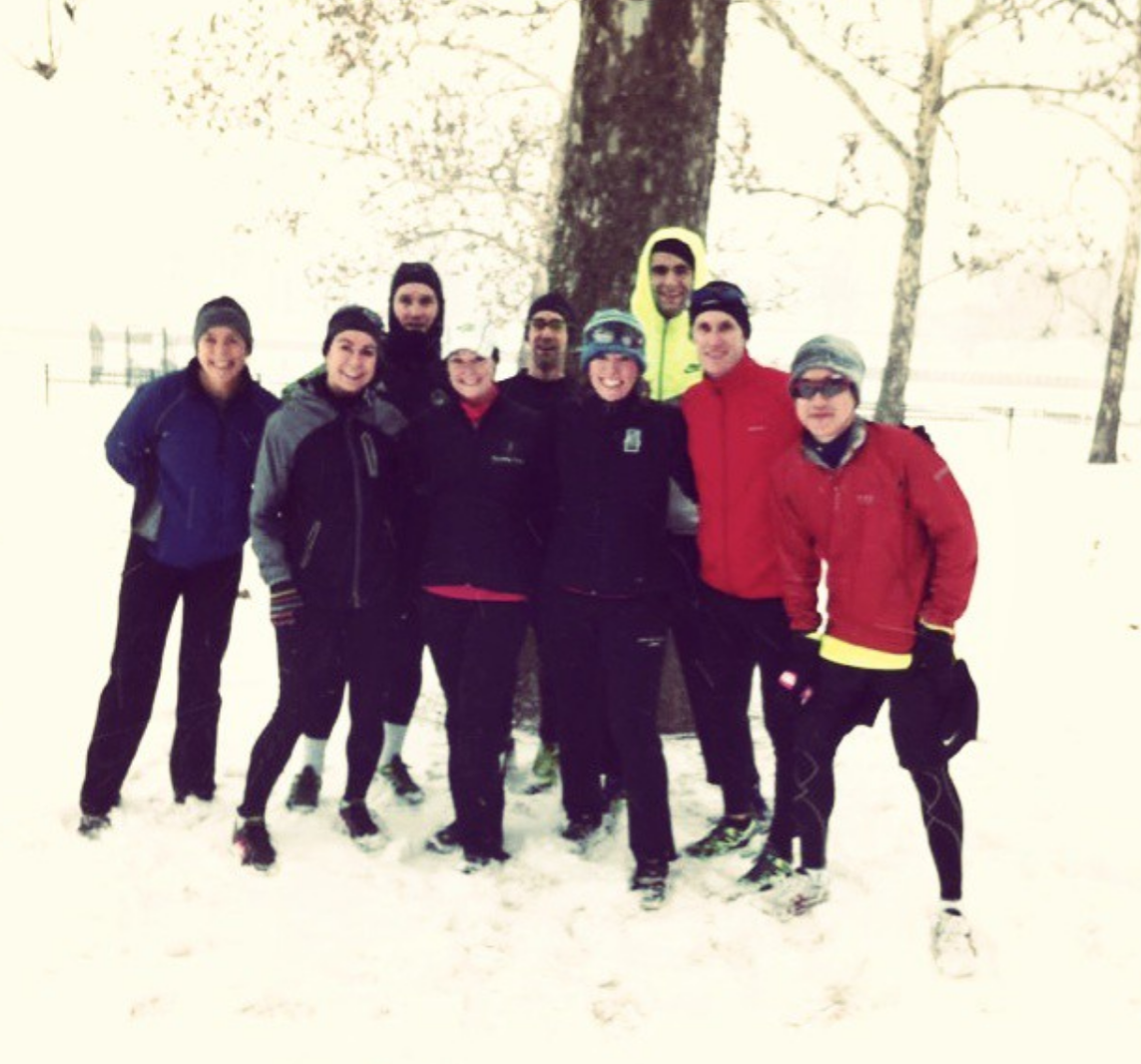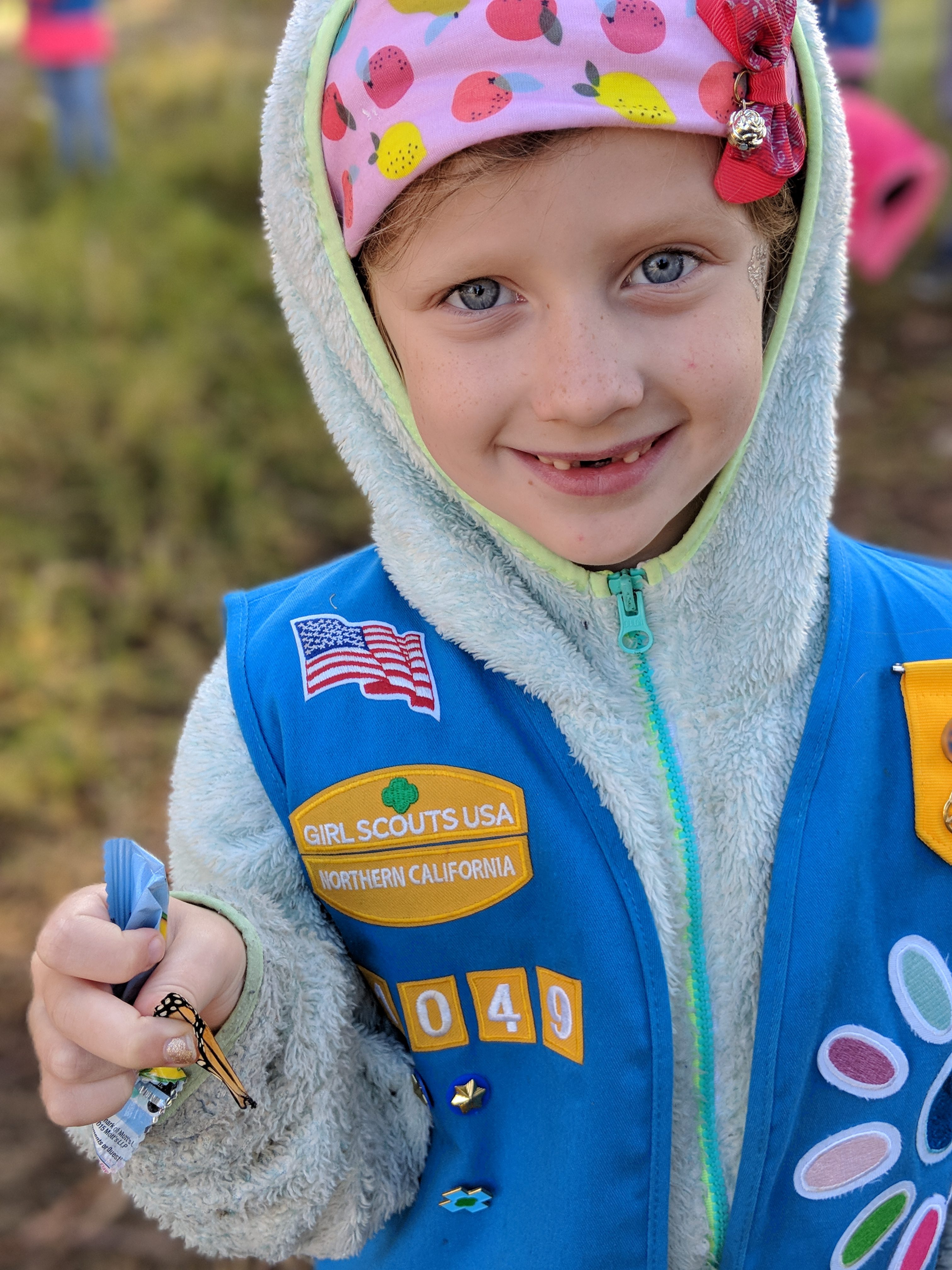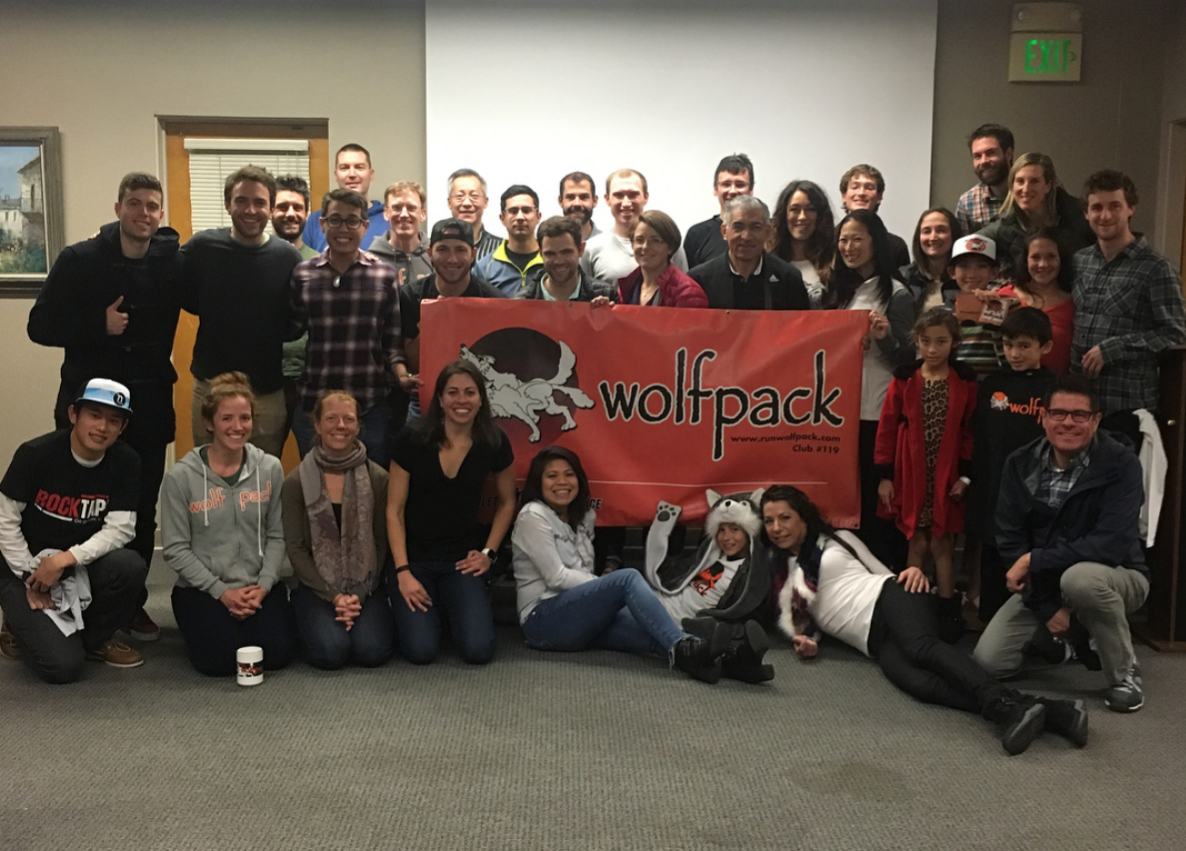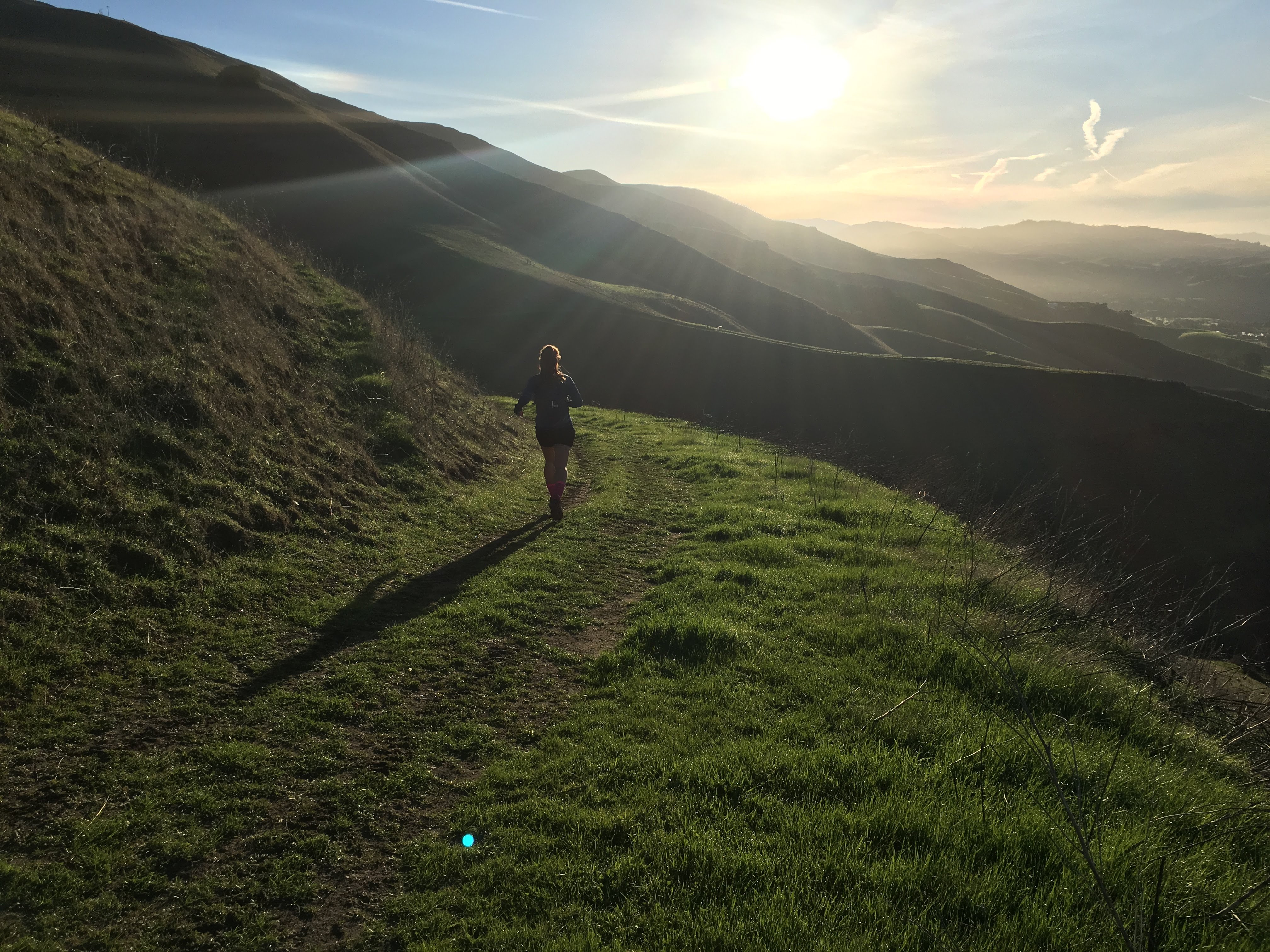Jonathan Beverly’s _Run Strong, Stay Hungry: 9 Keys to Staying in the Race_
Jonathan Beverly’s Run Strong, Stay Hungry: 9 Keys to Staying in the Race was yet another fantastic read about running, training, and racing that came out in 2017 from Velopress. I’m finding all types of good stuff lately! I’m a fan of Beverly and his writing — I’m most familiar with him from his days as editor-in-chief of Running Times (RIP) — so when I learned that he had written a book that explored running from a long-term perspective, I knew I had to read it.
The tl;dr version: if you’re a runner, regardless of how long you’ve been in the sport, go read it. It’s worthwhile. I mean, assume that if I found the time to write about it here, it’s worth reading. That’s a pretty good seal of approval. 🙂 (and #notspon, natch)
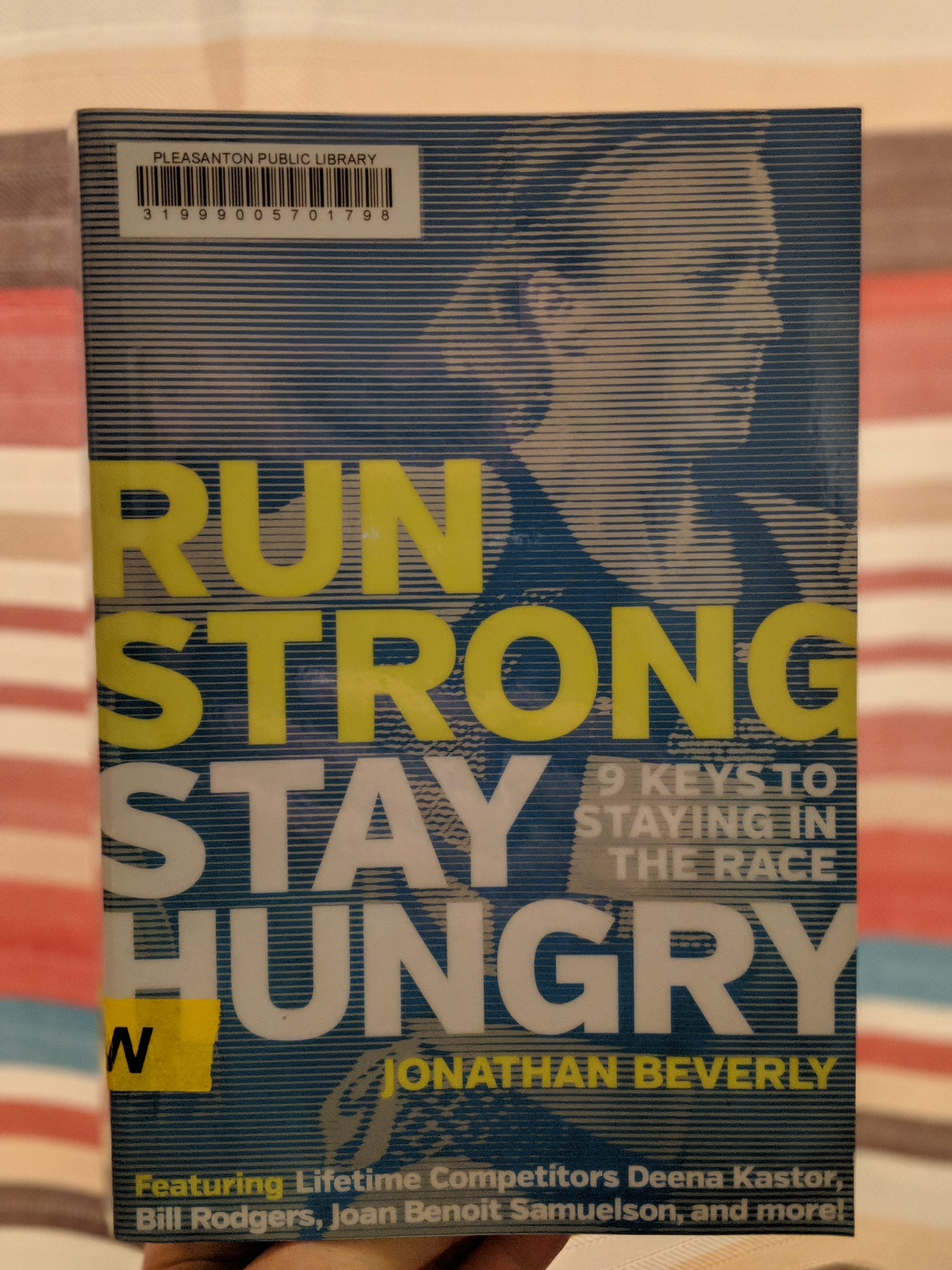
For the book, Beverly interviewed 51 different runners, all masters-aged, who have been running for a long time. Some athletes are the pros whose names you know quite well — Amby Burfoot, Joan Benoit Samuelson, and Deena Kastor, among them — but interspersed in the mix are also a lot of amateur, local athletes. The athletes’ experiences with running are as diverse as the athletes themselves, with some stories outlining how or why a particular athlete began running and later quit the sport, and others showing how an athlete persevered through some sort of struggle, like an injury, career demands, or child-rearing, and ultimately adapted his/her running to fit new life demands.
At its core, the book explores what it takes to be a “lifer”: a lifetime runner. It’s common knowledge that as we age, as runners, we slow down, and many of us are incapable of handling the demands and volume that our training from “yesteryears” dictated. For a lot of runners, that’s a hard reality with which they can’t square. Here’s an example: if you were a 2:30 marathoner, running 100+ miles a week, with doubles near-constantly, it can be a really hard pill to swallow that as you age, you can no longer hold marathon pace for a few or a single mile at a time or that your body can no longer recover so quickly from, or even manage, a volume that’s but a fraction of what you posted when you were younger. Thus, as many runners age, they give up the sport for this reason alone; in Beverly’s estimation, these athletes are more or less haunted by versions of their former self, a self to which they will physically no longer be able to measure up, so they don’t even bother trying.
Beverly notes early on that his work isn’t intended as a formal, qualitative, or longitudinal-based study on how to be able to run (and continue to enjoy it) for decades on end, and I think this approach actually helps to make the read so compelling, enjoyable, and honest. I enjoy reading that type of formal work, too — don’t get me wrong — but Run Strong reads and sounds more like an informal group panel presentation, with Beverly more or less moderating the masters runners to whom he is turning for insight. He sprinkles throughout his work studies that corroborate his runners’ claims and cites a lot of recent work that I’ve read recently and talked about on the blog, like Angela Duckworth’s Grit, but again, this isn’t a scholarly read. Think of it as an edited transcript that details and connects lots of disparate conversations with masters runners about how or why they’ve been able to run — or not run — as they’ve aged.
Run Strong is very accessibly written and is divided into two main components — physiological principles and psychological principles — that Beverly then breaks down into more distinct components, like consistency, variety, and humility, among others — to help better explain how runners can stay in the sport and continue to thrive. None of Beverly’s claims are particularly earth-shattering, but I think they’re all sensible and practical. Throughout my time reading the book, I found myself constantly nodding my head in agreement with Beverly’s and his runners’ claims because so much of what they said resonated with my own experiences over the past decade-plus of doing this marathon stuff.
While I’m still a ways off from entering masters territory, and while I feel like I still have improvements to make in my running, I wanted to read this book because sometimes, like a lot of runners, I lose sight of the big picture with my running. It can be really easy to fall into the comparison game, both with others and with ourselves, and feel like we “should” be performing at a different level, posting faster times, and running more miles simply because we’ve done it before. When we get into this flawed line of thinking, we fail to acknowledge our present realities and circumstances that may very well preclude us from hitting those metrics, and it can quickly fast-track us to injury, burnout, and/or feelings of total disappointment or detachment from the sport. I often have to catch myself when I begin to fall down this rabbit hole and remind myself to take the long-term view with my running. In this way, I anticipate that having all the little bits of wisdom and information in my back pocket from Run Strong will be especially helpful.
If you aren’t friends with many masters runners, folks who have been doing this stuff for a long time and who are continuing to thrive and enjoy their experiences, Run Strong, Stay Hungry will be invaluable to you. Even if you’re brand new to the sport — hell, I’d argue especially if you’re brand new to the sport — beginning your relationship with running with a view towards doing it for the long-term can save you a lot of unnecessary frustration and heartache. We’d all do ourselves a huge favor if we thought about our running as masters do (my go-to is “what would Erica do?”, a nod to a friend in Chicago whom I consider a lifer at the sport and someone whom I’d love to emulate), and Run Strong, Stay Hungry can help us to move in that direction.
